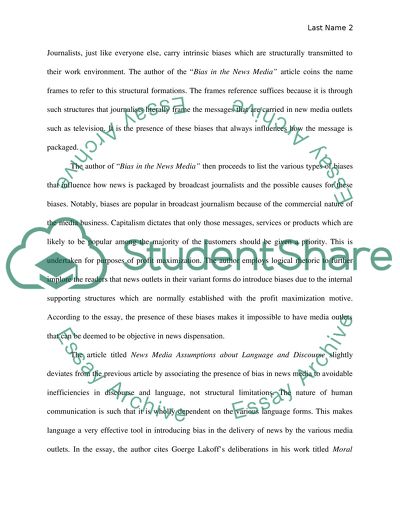Cite this document
(“Comparison of two articles about bias in the News Media Essay”, n.d.)
Retrieved de https://studentshare.org/english/1653501-essay
Retrieved de https://studentshare.org/english/1653501-essay
(Comparison of Two Articles about Bias in the News Media Essay)
https://studentshare.org/english/1653501-essay.
https://studentshare.org/english/1653501-essay.
“Comparison of Two Articles about Bias in the News Media Essay”, n.d. https://studentshare.org/english/1653501-essay.


